

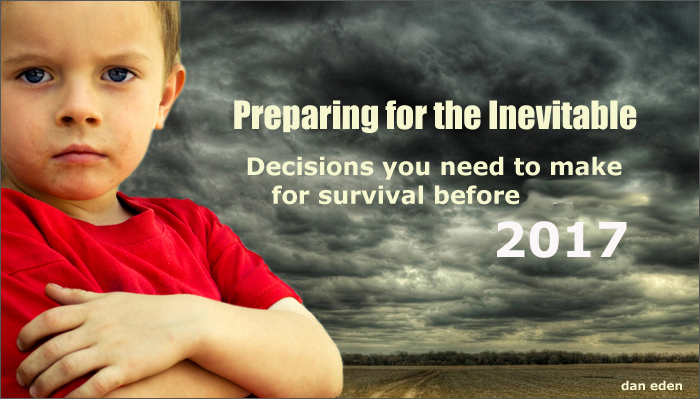
Preparing for the Inevitable
Part 2: Living Without Electricity || Part 3: Water, the Source of Life Part 4: Eating Dog Food? || Part 5: Money and Barter
 No electricity! It goes without saying that you won't want to pack your hairdryer or electric coffee maker in your bug out bag. While it's possible that the electric grid may fail in some kind of natural catastrophe, it's more likely that you will be some place that does not have access to electricity. If you're on the road, travelling to your safe place in the country, or even in you are home and afraid to use appliances because of invading water and fears of electrocution, it's good to plan as if there's no power. With regards to communications devices, like cellphones and laptops, it really depends on the circumstances. You will want to try and contact family and friends -- even emergency responders -- so take your phone and recharging wires. Some of these devices can operate on a car's 12 VDC supply by a wire that goes in to the cigarette lighter. Most cellphone towers and networks have backup power supplies so you can expect limited use, at least initially. The internet is more vulnerable and therefore less reliable.
We rely so much on electricity today that we take it for granted. We need power to use the ATM machine and get our cash from the banks. We need power to fill our cars with gas, run our cellphones and internet, pump water and sewage in our municipalities and run the cash registers at the local Walmart. All of these will be gone if the electric grid goes down. That's why it's important to anticipate living with no electricity. Some things you might want to consider now are:
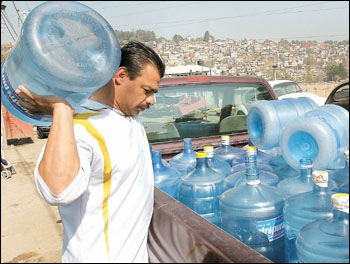
 
Comments: Hi Just a quick comment about refrigerated food. We had a hurricane a while back and the electric was out for 10 days. Our main concern was all the food we had in the freezer and refrigerator! There's no way around it, you are going to lose some stuff. All the minor condiments, like mayonnaise, butter and things that go bad quickly are better off being chucked in the trash as soon as you can do it. Otherwise they go bad and stink up the whole box and start to grow green stuff -- really gross! But we took all the meat anf chicken and fish and cooked them "well done" on a gas grill. Then we took them right off the grill, wrapped them in aluminum foil and put them in plastic bags, being sure to get as much air out as we could. Using this method we had enough food to eat for the duration. We would unwrap the stuff and then either eat it cooked again (warmed up) or uncooked. No one got sick and it was delicious. For stuff like ice cream, might as well either eat it while the world blows up or you will end up with a messy freezer. And be warned, dairy products smell really bad when they get old. Here's a little tip... I lived near a convenience store whose power was also gone. I have kids so decided to buy a couple of quarts of ice cream. The owner said, "Just take it." Same with the milk. I guess he didn't want his store to start smelling bad either. The kids enjoyed it but it was a long time before they ever asked for ice cream again! If you have kids, buy candles and maybe have some board games or puzzles to keep their minds active. That's about all I can think of. Bob S. Just wanted to share a good story with you. We were in a power outage a couple of years back that effected the entire neighborhood. We live in the suburbs. Since I am in construction I had a couple of gas generators and was able to run lights, fans and even a TV. Sure enough, I was the only source of light and attracted the other neighbors like moths! But they came with food, soda and wine and asked if they could stay for a while and enjoy the "regular life." It was like a party! Everyone shared what they had and neighbors who had never spoken to each other formed friendships that lasted long after the lights came back on. So, not all people are bad. anonymous Hi, Lots of iPods and iPhones have an adaptor that will recharge from USB that plugs into the cigarette lighter of your car. So if you are driving anyway, its a good way to keep those thing working. Keith Z. Here's something to think about regarding the dark. It's hard to imagine how dark it can get when everything is out -- even the distant streetlights and city lights. You really need light to see eachother, check on a suspicious noise or let the kids go to the toilet. Yo need flashlights! Flashlights range in price from the 79 cent cheapie to the fancy multi-function $80 special. Consider a small 2-AA battery flashlight with a halogen bulb. These cost about $4-5 each, give an excellent clear white light, and are easily portable in a pocket or purse. Additionally, when we discuss communications later in the article, the most common battery used in these devices is also the AA, so your life will be simplified if you stick primarily to one type of battery and don’t have to buy various odd sizes for different needs. Batteries wear out rapidly if your flashlights are used continuously: figure two changes per week of regular use. Alkaline batteries last longer, give a more powerful light, but cost more than regular batteries. Most rechargeable batteries are suitable for flashlights, but should be recharged when the light begins to dim a little. Don't let them get completely drained. This means you would need several sets of rechargables for each flashlight (some would be recharging while you use the others). Also, store them where you can easily find them (in the dark!). Also, its a good idea to buy lots of cheap candles and use them as lighthouses around your house, apartment or campsite... and a good cigarette lighter or matches, of course. HR
I saw a show on TV where these people made bread and cakes by cooking them in the sun.
Solar cooking is a good option if you have no electricity, provided that you have plenty of unobstructed sunlight and someone who is willing to adjust the cooker to face the sun every half hour or so. A solar oven need be no more fancy than a set of nested cardboard boxes painted flat black on the inside with tempura colors, a sheet of window glass, and some aluminum foil glued to cardboard panels. Total cost for this, if you can scrounge leftover glass and cardboard, is about $1. A solar oven design made with cardboard boxes, aluminum foil, and a piece of window glass. Interior of the box is flat black paint which will absorb the light and turn it to heat. Place your food in a covered lightweight pan inside the box, prop it so the entire interior is exposed to the sunlight (about a 45-degree angle), cover with the sheet of glass (and tape the glass so it won’t slide), then prop the aluminum foil panels so that they reflect more sunlight down into the box. Move the box every 30 minutes so it maintains an even temperature. It will get hot fast, easily up to 325 degrees, and hold the heat as long as it faces the sun. Remember to use potholders when removing your foods! Our first solar oven had a black plastic trash bag as a heat-absorbing inner surface; it worked superbly until the plastic actually melted! Be creative. Good luck and thanks for posting these great ideas. Lisa F.
 
|
Editor/viewzone.com
myristicin@hotmail.com

This article shows you how to "read" the eyes of your lover, boss or politician. It's the same tried and tested method used by Homeland Security, the police and FBI.
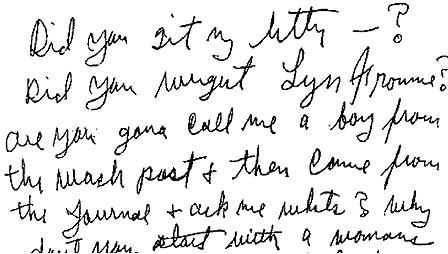
Learn everything about handwriting analysis in these free viewzone lesson by a professional!

Each person's fingerprint is unique. Exactly how do they match them so quickly?

What do your color preferences reveal about your hidden personality. See what advertisers and marketing professionals have known for decades.
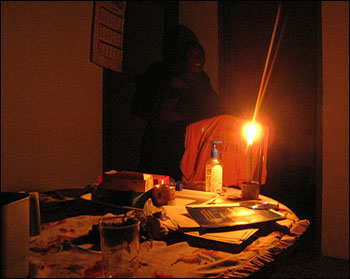 One of the very real dangers that we have been told about by NASA in the past couple of weeks is something called a Coronal Mass Ejection. This is like a sun flare that hits the earth's atmosphere with so much energy that it can actually generate electricity in just about anything made of metal. As a result, if we get hit with one, the power grid will definitely be burned out -- at least temporarily -- and many appliances that are connected to the grid will likely be fried. Also, in the event of trees falling on power lines, or flooding in large areas, the electric company usually shuts off all power to large areas of the population to avoid electrocution.
One of the very real dangers that we have been told about by NASA in the past couple of weeks is something called a Coronal Mass Ejection. This is like a sun flare that hits the earth's atmosphere with so much energy that it can actually generate electricity in just about anything made of metal. As a result, if we get hit with one, the power grid will definitely be burned out -- at least temporarily -- and many appliances that are connected to the grid will likely be fried. Also, in the event of trees falling on power lines, or flooding in large areas, the electric company usually shuts off all power to large areas of the population to avoid electrocution.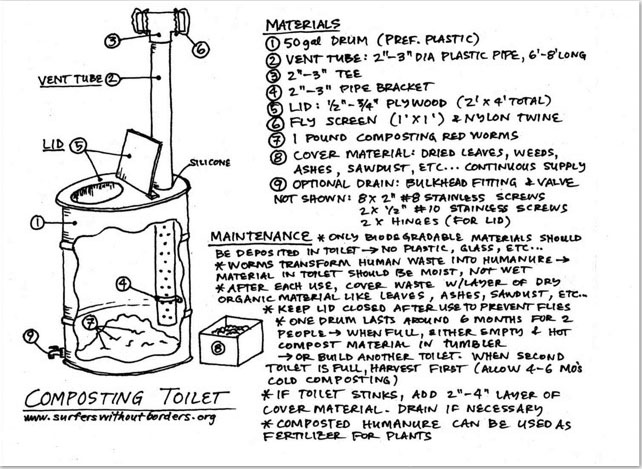
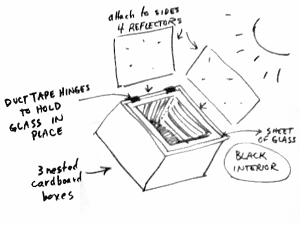 Here's something I found on line about it.
Here's something I found on line about it.